If your home has suffered from water damage, it may be susceptible to that insidious intruder we call mold. More than being a rather nasty blemish, mold can cause significant problems for your health and the safety of your property.
Understanding the warning signs of mold and knowing when to take action for mold removal Sonoma County can help you address this issue before it escalates. In this comprehensive guide, we will delve into the critical aspects of mold growth, how to identify it, and the best ways to prevent it, especially after water damage.
How Long Does It Take for Mold to Grow?
Mold spores will float through the air until the right conditions allow them to thrive. These spores can grow within 24 to 48 hours of exposure to moisture which is part of the importance of timing in water damage restoration. The exact time it takes to grow will depend on several factors:
Moisture Level
Mold requires moisture to grow, so any excess water or humidity can accelerate its growth.
Temperature
Mold tends to grow best in temperatures between 77°F and 86°F but it can thrive in both warmer and cooler conditions.
Food Source
Mold feeds on organic materials such as wood, paper, carpet, and even dust, which provide the nutrients it needs to grow.
Ventilation
Poor ventilation contributes to moisture buildup, creating a favorable environment for mold.
How Fast Can Mold Grow on Drywall?
Drywall, unfortunately, is an ideal source for mold growth. When drywall becomes wet, mold can begin to grow within 24 to 48 hours.
Mold Growth Warning Signs
Early detection can prevent extensive damage and potential health issues. When you check for mold in your property, here are some common warning signs of mold growth:
Visible Mold
The most obvious sign of mold is seeing it on surfaces. Mold can appear as black, green, or white patches and often has a fuzzy or slimy texture.
Musty Odor
A persistent musty smell is often a sign of hidden mold. This odor is caused by the release of microbial volatile organic compounds as mold grows.
Water Damage
Stains or discoloration on walls, ceilings, or floors often indicates water damage, which can lead to mold growth.
Allergy Symptoms
If you or your family experience unexplained allergic reactions, such as sneezing, coughing, or itchy eyes, it may be due to mold exposure.
Warping or Peeling
Warped walls or peeling paint or wallpaper can indicate moisture problems that may be conducive to mold growth.
Mold Growth Signs on Walls
Here are some specific signs to look for:
Discoloration
Mold on walls may appear as black, green, or brown patches. It can also cause the paint or wallpaper to discolor.
Texture Changes
Walls may feel damp or soft to the touch, indicating moisture trapped behind the surface.
Bubbling or Peeling Paint
As mold grows, it can cause paint to bubble or peel away from the wall.
Cracks or Bulging
Mold can weaken the structure of walls, leading to cracks or bulging areas.
Where Does Mold Growth Happen Most Often?
Mold can grow almost anywhere, but it is more likely to thrive in certain areas of a home or building. If you suspect you may have an infestation, you can always test for mold in your home. Here are some of the most common places where mold growth occurs:
Bathrooms
Bathrooms are prime spots for mold growth due to the high humidity and frequent water usage. Mold can develop on shower walls, ceilings, and floors, as well as around sinks and toilets.
Kitchens
Mold can grow under sinks, behind appliances, and on walls or ceilings if there is poor ventilation or leaks.
Basements
Basements are often damp and poorly ventilated, making them ideal environments for mold growth. Mold can develop on walls, floors, and stored items.
Attics
Leaks in the roof or poor ventilation can lead to mold growth in attics, often going unnoticed until significant damage occurs.
Laundry Rooms
Excess moisture from washing machines and dryers can contribute to mold growth in laundry rooms.
How to Prevent Mold from Growing?
Preventing mold growth is crucial to maintaining a healthy and safe living environment. Here are some effective strategies to keep mold at bay:
Control Humidity
Keep indoor humidity levels below 60% using dehumidifiers or air conditioners. Ventilate bathrooms and kitchens to reduce moisture.
Fix Leaks Promptly
Repair any leaks in roofs, pipes, or walls as soon as they are detected to prevent moisture accumulation.
Improve Ventilation
Ensure that your home is well-ventilated to reduce moisture buildup. Use exhaust fans in bathrooms and kitchens.
Regular Cleaning
Clean and dry surfaces regularly, especially in areas prone to moisture, to remove any mold spores before they can grow.
Use Mold-Resistant Products
Consider using mold-resistant drywall, paint, and insulation in areas prone to moisture.
How to Prevent Mold After Water Damage?
Water damage is a significant contributor to mold growth. Taking prompt and effective action after water damage can help mold removal in Sonoma County. Here are some steps to take:
Call a Professional
Part of the importance of professional water damage restoration services is their ability to quickly and completely restore your property, including ensuring it’s protected from mold growth.
Dispose of Damaged Materials
Remove and discard any materials that cannot be thoroughly dried, such as carpet padding, insulation, and drywall.
Clean and Disinfect
Clean all affected surfaces with water and detergent, then disinfect with a solution of bleach and water or another mold-killing agent.
Monitor for Mold Growth
Keep an eye on the affected area for any signs of mold growth in the weeks following water damage.
Protect Your Property Against Mold with Bravo Restoration
If you suspect mold in your home or have experienced water damage, contact Bravo Restoration today or give us a call at (707)837-0675. At Bravo Restoration, we specialize in comprehensive mold inspection, removal, and prevention services to ensure a safe and healthy environment for you and your loved ones.

